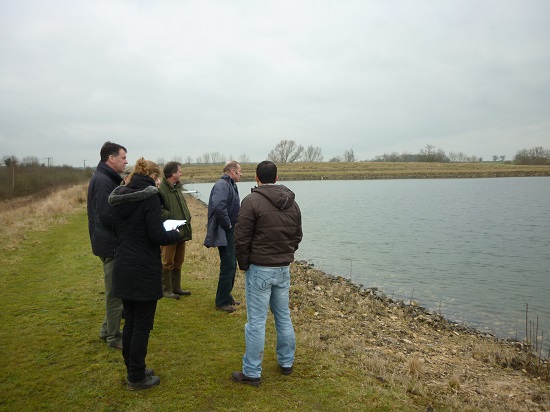Is building an irrigation reservoir the right option for farmers?
The challenge
In eastern England, the irrigated agri-business sector supports some 50,000 rural livelihoods and contributes over £3bn annually to the region’s economy.
Most irrigation water is abstracted from local rivers and streams, typically in the driest parts of the country at the driest times of the year, and used immediately with relatively little on-farm storage. This can result in significant local environmental impacts, but any restrictions on abstraction risk being financially disastrous for farmers.
Irrigation reservoirs could help improve water security, but farmers face complex planning difficulties that limit take-up of this option.
The solution
In 2006, researchers at Cranfield University undertook a major study ‘A fair share of water for agriculture’ looking at how future water constraints would impact on the security of some 50,000 rural jobs in the irrigated agricultural sector. Over the next four years the researchers worked with key farming stakeholders to rethink the role of on-farm water storage.

Members of the project team visit a typical irrigation reservoir
In 2009 the EA commissioned the researchers to develop materials for promoting investment in irrigation reservoirs. Reservoir designers, constructors, local planners, lawyers, environmental groups, archaeologists, banks, and, most importantly, farmers who had recently had reservoirs constructed, were consulted to tease out the costs, the problems encountered, and the solutions.
A detailed technical report was prepared and an information booklet for farmers ‘Thinking about an irrigation reservoir?’ was disseminated to over 2,500 farmers and agri-food businesses across the eastern region. The researchers organised a one-day national conference through the UK Irrigation Association at which the various contributors were able to publicise reservoir construction not just to the 120 participants but also through the farming press. This was followed by a number of specific training initiatives at a more local level and organised visits to farm reservoirs, both constructed and under construction.
Resulting benefits
Farmers now more aware of the costs and benefits of on-farm water storage and the challenges they face in the planning process as well as in design, construction and commissioning reservoirs. All irrigation abstraction licence holders received a copy of the booklet, and it is downloadable from the UKIA website.
As one farmer in the irrigated sector commented “Guides like ‘Thinking about an irrigation reservoir’ are essential for bringing together the wide range of factors that comprise an effective plan for water storage. I was impressed when my regional development officer for agriculture suggested I must have a copy – I already had!”
Future directions
Further events are expected to extend the programme into the Southern and Midlands Regions where high value crops are also irrigated in areas of water stress. The researchers are also involved in the development and implementation of water strategies for agriculture and horticulture with support from the Environment Agency, and the Horticultural Development Council. They are currently undertaking research for Defra looking at the costs of reservoirs and constraints to reservoir development.
Add Pingback











